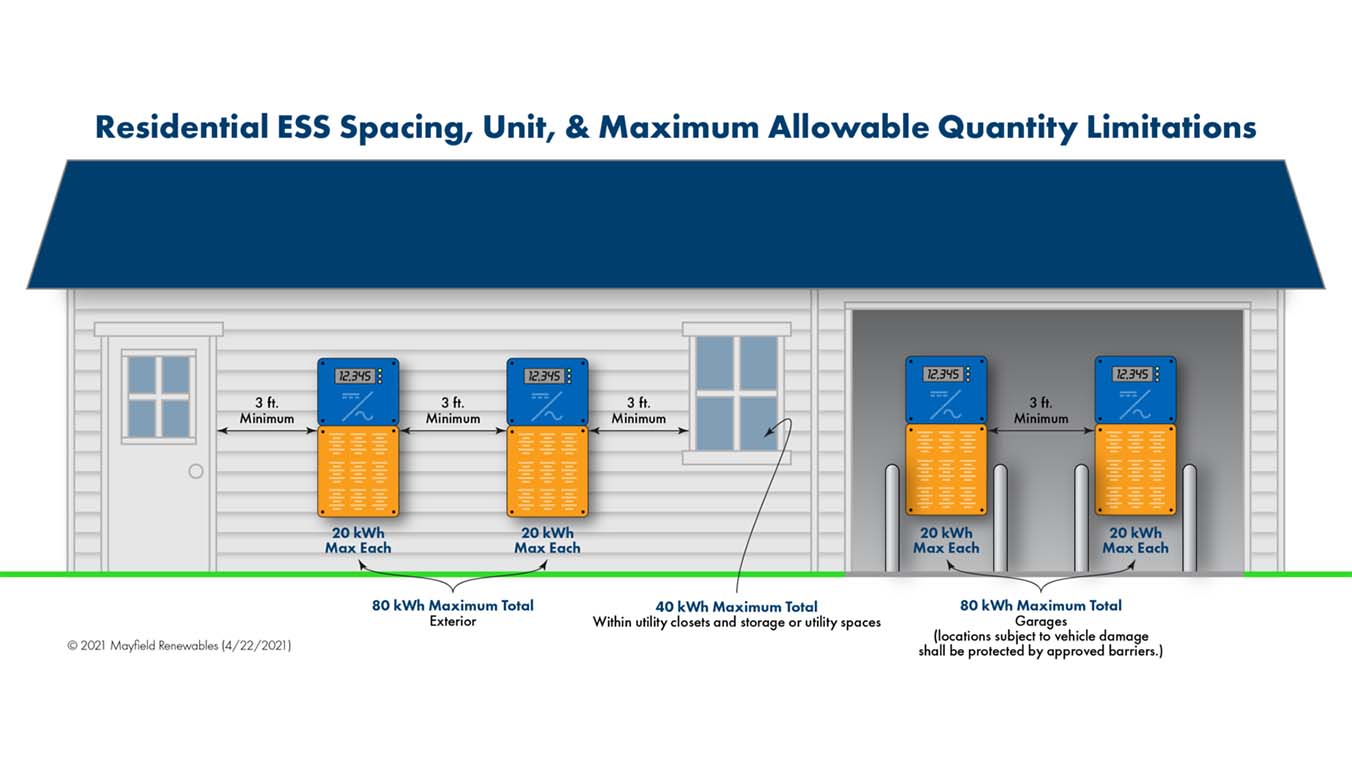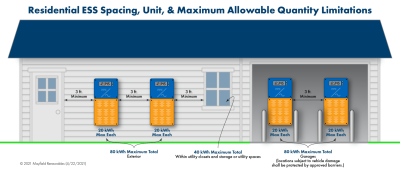Watts Happening
I call it like I see it.
- Joined
- May 3, 2022
- Messages
- 802
I've been poking around each aspect of my install to ensure I'm not going to upset an inspector in the near future and when it comes to ESS, I'm confused.
Per this well written article, which sums up the codes relating to ESS, I'm trying to define what the "20kWh max each" means:

 www.mayfield.energy
www.mayfield.energy
Is this a single battery with a max of 20kWh, or a stack of server rack batteries totaling 20kWh? IE, if it was a max in one location such as a server rack, we couldn't have more than (3) standard server rack batteries in one location without going over the 20kWh mark (we'd barely be over, but that .3kWh will matter to someone I'm sure).
So again, is it a single battery, or combination of batteries in one location without spacing? I'll be fine with the 80kWh total in the garage, but I want to ensure I'm not stacking six server rack batteries right next to each other and creating a violation right out of the gate.

Per this well written article, which sums up the codes relating to ESS, I'm trying to define what the "20kWh max each" means:

Fire Codes and NFPA 855 for Energy Storage Systems — Mayfield Renewables
Fire codes and standards inform energy storage system design and installation and serve as a backstop to protect homes, families, commercial facilities, and personnel, including our solar-plus-storage businesses. It is crucial to understand which codes and standards apply to any given project...
Is this a single battery with a max of 20kWh, or a stack of server rack batteries totaling 20kWh? IE, if it was a max in one location such as a server rack, we couldn't have more than (3) standard server rack batteries in one location without going over the 20kWh mark (we'd barely be over, but that .3kWh will matter to someone I'm sure).
So again, is it a single battery, or combination of batteries in one location without spacing? I'll be fine with the 80kWh total in the garage, but I want to ensure I'm not stacking six server rack batteries right next to each other and creating a violation right out of the gate.




